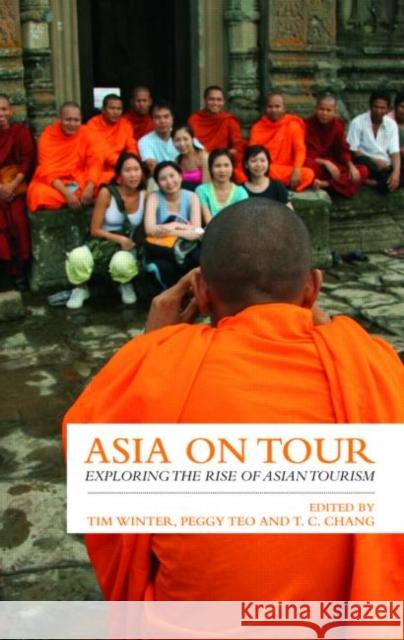Asia on Tour: Exploring the Rise of Asian Tourism » książka
Asia on Tour: Exploring the Rise of Asian Tourism
ISBN-13: 9780415460866 / Angielski / Miękka / 2008 / 360 str.
Asia on Tour: Exploring the Rise of Asian Tourism
ISBN-13: 9780415460866 / Angielski / Miękka / 2008 / 360 str.
(netto: 246,95 VAT: 5%)
Najniższa cena z 30 dni: 246,78 zł
ok. 16-18 dni roboczych.
Darmowa dostawa!
With the vast majority of academic theory on tourism based on 'Western' tourists, Asia on Tour illustrates why the rapid growth of travel for leisure and recreation in Asia demands a reappraisal of how tourism is analyzed and understood. Examining domestic and intra-regional tourism, the book reveals how improvements in infrastructures, ever increasing disposable incomes, liberalized economies, the inter-connectivities of globalization and the lowering of borders, both physical and political, are now enabling millions of Asians to travel as tourists. Drawing upon multidisciplinary theoretical perspectives and up-to-date empirical research, the twenty-three accessible essays in this volume indicate why a rigorous and critical study of Asian tourism must become integral to both our analysis of this rapidly transforming region and our interpretation of global tourism in the twenty first century. As a rich collection of essays on heritage and tourism oriented around Asian tourists, Asia on Tour will be of particular interest to students and scholars working in the fields of tourism, Asian studies, geography, heritage, anthropology, development, sociology, and cultural and postcolonial studies.
With the vast majority of academic theory on tourism based on ‘Western’ tourists, Asia on Tour illustrates why the rapid growth of travel for leisure and recreation in Asia demands a reappraisal of how tourism is analyzed and understood. Examining domestic and intra-regional tourism, the book reveals how improvements in infrastructures, ever increasing disposable incomes, liberalized economies, the inter-connectivities of globalization and the lowering of borders, both physical and political, are now enabling millions of Asians to travel as tourists. Drawing upon multidisciplinary theoretical perspectives and up-to-date empirical research, the twenty-three accessible essays in this volume indicate why a rigorous and critical study of Asian tourism must become integral to both our analysis of this rapidly transforming region and our interpretation of global tourism in the twenty first century.
As a rich collection of essays on heritage and tourism oriented around Asian tourists, Asia on Tour will be of particular interest to students and scholars working in the fields of tourism, Asian studies, geography, heritage, anthropology, development, sociology, and cultural and postcolonial studies.











